Yesterday I returned from my two weeks’ long trip to Bosnia & Herzegovina. I had been before, but that was back in 2009 and only for a few days in Sarajevo and Mostar. On this trip I had a lot more time and also went on several tours that took me out of the cities and to some quite off-the-beaten track locations.
As before, after my trips to Portugal earlier this year and Australia last year, I give you a quick photo essay Blog Post based mostly on photos taken with a smartphone, since the “proper” photos I took with my dSLR in RAW format first need developing and sorting. And that will take a lot of time. But that will have to wait as first I’m going on another week’s trip tomorrow, namely to northern Germany (mainly to see family and friends). So I’ll basically let the photos speak for themselves and will keep the explanatory text to a minimum. Further explanation will have to come later when I update/expand/write the relevant chapters for my main website. And that will probably take several weeks, if not months
So, back to Sarajevo. Here’s a first photo taken by the river and showing the historic Latin Bridge. Next to it was the site of the assassination of Archduke Franz Ferdinand in 1914, which sort of triggered the beginning of World War One:

In fact one of the tours I went on was a “Franz Ferdinand Tour”, which included several related locations, and also a visit to the little museum next to the bridge that is mainly about the assassination and the Austro-Hungarian period in Bosnia. The museum’s contents have not changed since 2009 as far as I could tell.
Another museum I revisited was the contemporary history museum with its exhibition about the long siege of Sarajevo from 1992 to 1995. A sign informed visitors that the museum’s contents are about to undergo a reworking, so I’ll just give you a photo from the socialist-era staircase with its old mosaic on the wall:

The Siege of Sarajevo Tour I went on included a revisit of the so-called Tunnel of Hope (aka Tunnel of Salvation) that ran under the airport runway and was used to supply the besieged city. This well-known site has become even more touristy and these days you can walk much more of the length of the tunnel:
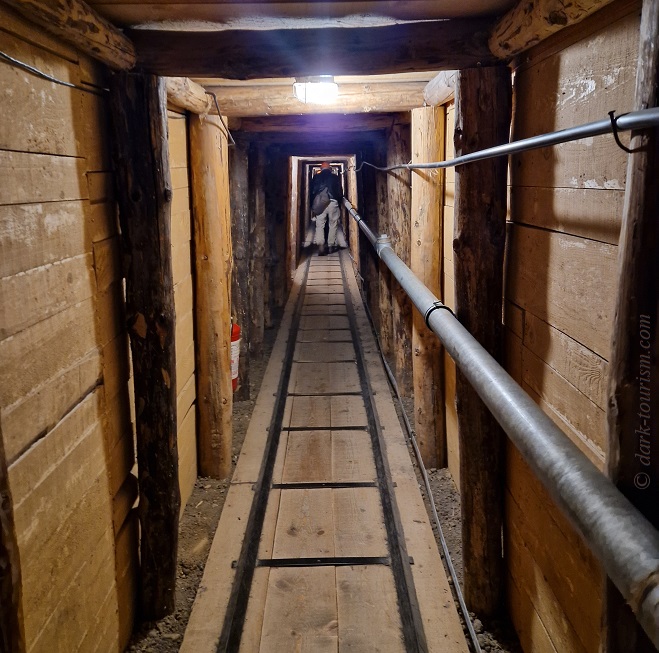
Another siege-related hallmark of the city are the so-called Sarajevo Roses, where the shrapnel marks of shells that fell during the siege were later filled with red resin to serve as memorials. Here’s an example (same photo as the featured one at the top of this post):

The war of the 1990s even leaves its mark in the most touristy part of Sarajevo’s Old Town, namely in some of the souvenirs made from war relics, as seen in this next photo:

Much more off the beaten track are some of the larger war ruins that still exist in Sarajevo. The one I remembered best is what was supposed to become a retirement home, but was unfinished when the war began. It’s completely pockmarked with bullet holes.
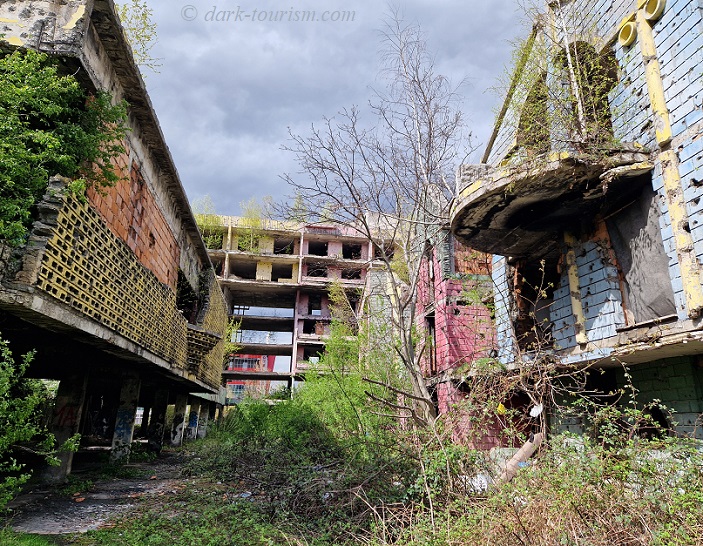
Unfortunately, this stunning site is apparently doomed – my guide told me that there are plans to demolish it to make space for a new development. From a DT perspective that’ll be quite a loss, of course.
On this trip I also managed visit several museums that didn’t yet exist when I was in Sarajevo back in 2009. One of the darkest and most significant of these is the Museum of Crimes against Humanity and Genocide, whose most bizarre signature exhibit is this “Bread Man” (a symbolic reference to bread supplies during the siege):

Another new museum is the War Childhood Museum, in which the memories of people who lived through the siege as children are recounted and often associated with particular objects such as toys or pieces of clothing. It’s actually a very intriguing addition to Sarajevo’s DT portfolio. Here’s a photo from the inside:

I also visited the newer Siege Museum (run in conjunction with the Crimes against Humanity and Genocide Museum), another smaller private one about life during the siege, and an excessively nostalgic Tito/Yugoslavia museum. But I don’t have sufficiently good smartphone photos for those, so will leave it at this brief mentioning.
The restored City Hall of Sarajevo is not only a stunning Byzantine building from the Austro-Hungarian era, it also has some relevance for modern dark tourism.

In terms of DT, the exhibitions inside include one about the shelling of this Sarajevo landmark by Serbian artillery as well as one about the ICTY (International Criminal Tribunal for the former Yugoslavia) in The Hague. Its star exhibit is this reconstruction of the ICTY courtroom:

As indicated above, this long trip also took me to places outside the cities. And the first one I was taken to was the “Tito Bunker”, a Cold-War-era relic deep in the mountains a good hour’s drive out of Sarajevo. Here’s a photo of the characteristic curved access tunnel (to reduce blast force) that such structures often feature:

The bunker is a huge complex built for hundreds of officials and military personnel, not just for Tito himself, and included a large conference room, part of which is seen in this next photo (note also the Tito portrait on the wall!):

The longest part of the trip outside the cities was a four-day round trip, first east and south and then west, and this included various places in the “Republika Srpska” (the Serbian part of Bosnia & Herzegovina). One of them was the birthplace of Ratko Mladić, the Serbian general who was sentenced to life imprisonment at the ICTY for the Srebrenica genocide. But here (as in much of the Republika Srpska) Mladić is regarded as a “hero” and they even erected this semi-symbolic monument for him. It doesn’t have a face, but the general’s cap with the Serbian colours symbol on it is iconic enough that you can almost see Mladić’s image …:

The four-day tour included two overnight stays in Mostar, which we used as a base for drives into the surrounding lands, but we also spent some time in Mostar itself. I insisted on revisiting what I remembered as the most stunning war ruin I’d seen in Mostar back in 2009, a former bank building that was used as a sniper’s nest during the war. It was easy enough to locate again, but, as a reader had informed me a few years ago the building has been completely gutted, only the raw concrete is left and the once so aesthetically broken windows are all gone:
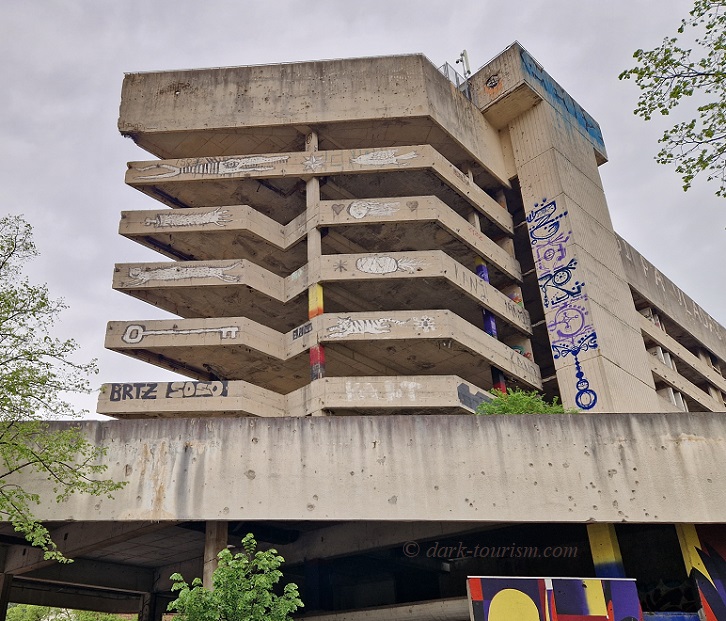
Just outside Mostar, near what is now a civilian airport, I insisted on a stop by a former underground military fighter hangar code-named “Objekt Buna” that I had read about before the trip. It’s kind-of the Bosnian equivalent to the Željava airbase in Croatia, also a former Yugoslav Air Force installation. This one in Mostar has only two entrances/exits, and here’s one of them:

Inside is a long curved tunnel, cavernous enough to house a squadron of fighter jets, but now completely empty (save for some debris, the odd scuttling rat and pigeons by the entrances). Venturing inside is only possible with a good torch, as once you are in the curved tunnel away from the entrances it is completely pitch-black dark. I have a high-lumen torch, but even that struggled to give me enough light to take good pictures. The place simply eats light. Here’s a photo taken by my wife with her smartphone, showing me using my torch and with one of the entrances in the background:
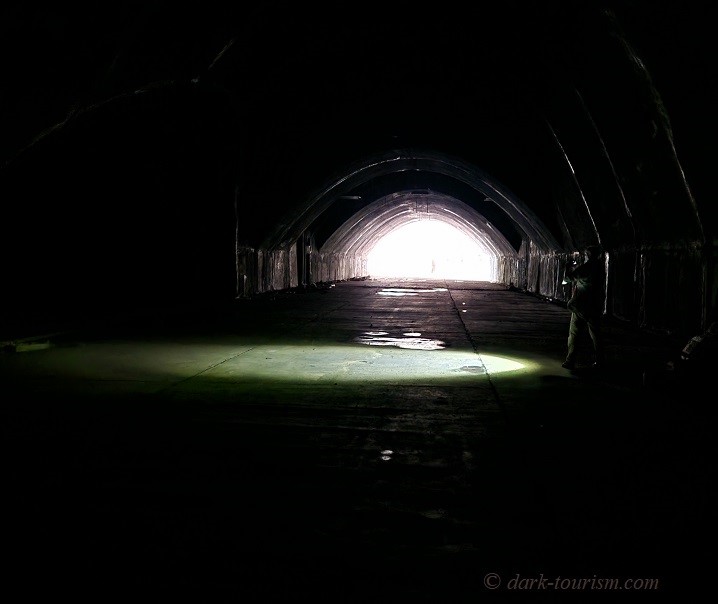
This was definitely an urbexing highlight of the trip. But there was more urbexing to come. For instance our driver/guide made a short stop at the “bone hospital”, a former medical centre that during the war was used as a concentration camp. There’s a plaque to that effect on the compound’s gate, but otherwise the structure is completely abandoned and so dilapidated that it has partially collapsed.
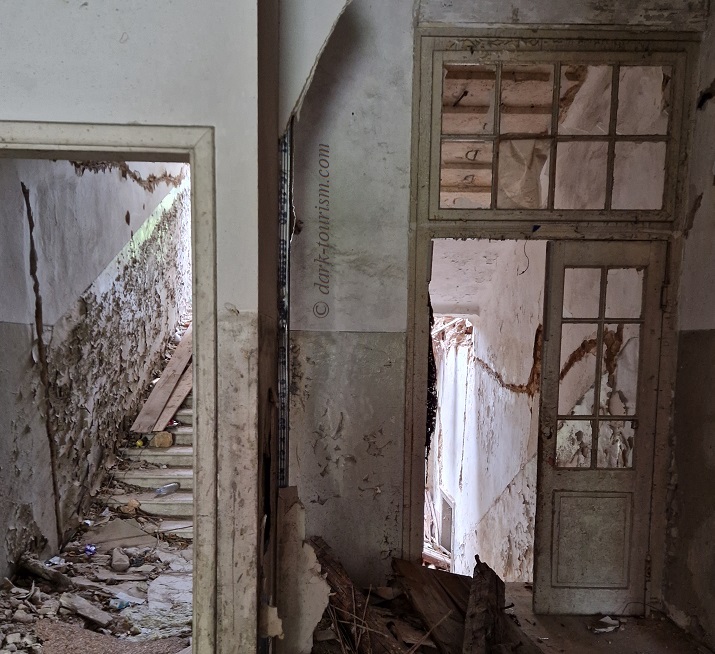
Much more recent destruction we witnessed at Donja Jablanica, a village that was partially swept away by a landslide caused by massive flooding in October 2024, killing around 20 people:

In the main town of Jablanica you can find a collapsed old railway bridge. This forms part of a memorial complex celebrating Tito’s partisans’ victory in the Battle of the Neretva (that’s the river’s name) back in 1943. Apparently Tito called his enemies’ bluff by having this bridge blown up rather than falling for the trap set up for him here:
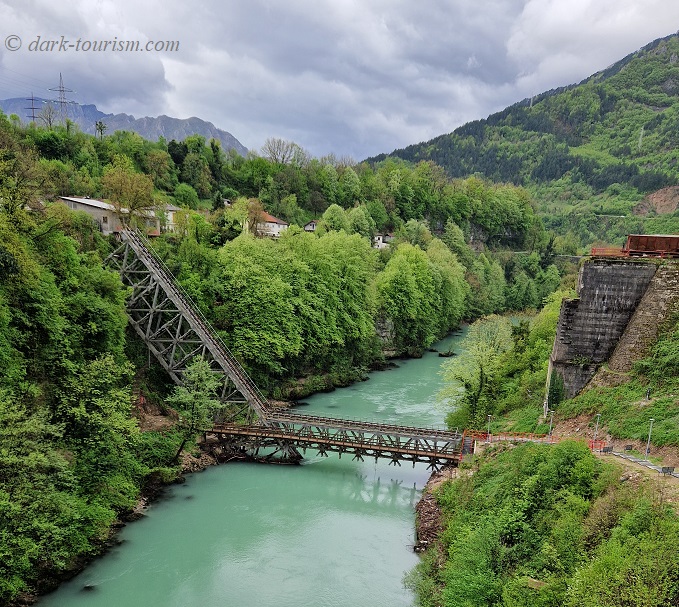
The multi-day trip around more remote parts of Bosnia also took us to some of the legendary “Spomeniks”, that is Yugoslav-era, modernist, concrete monuments, usually also glorifying some partisans’ actions in WWII, such as this classic design:

The best preserved spomenik we saw at Kozara, a fabulous concrete tower-like monument with shiny metal still in place on the outside:
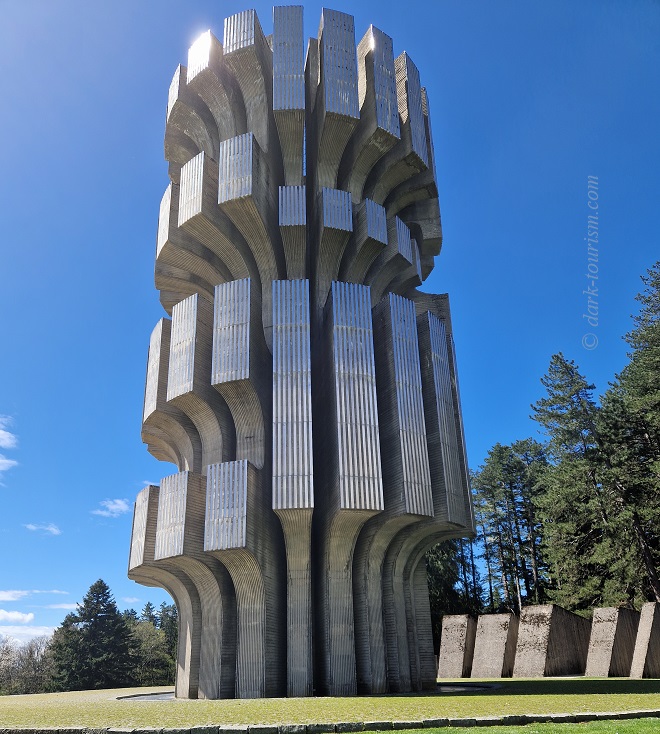
This site even still had a working museum and souvenir stalls. That’s in stark contrast to most spomeniks all over former Yugoslavia. Most are abandoned, unloved and vandalized (see e.g. Petrova Gora).
Kozara is in the north-western part of the Republika Srpska. And its self-declared “capital” city Banja Luka was our base for one night. Wandering from the hotel into the city centre, I happened upon this splendidly brutalist church:

Back in Sarajevo I also went on a “Brutalism Tour”, and that included as its highlight a visit to the ruin of what was once Hotel Igman (on the mountain of the same name), built for the 1984 Winter Olympics and totally trashed during the war in the 1990s:
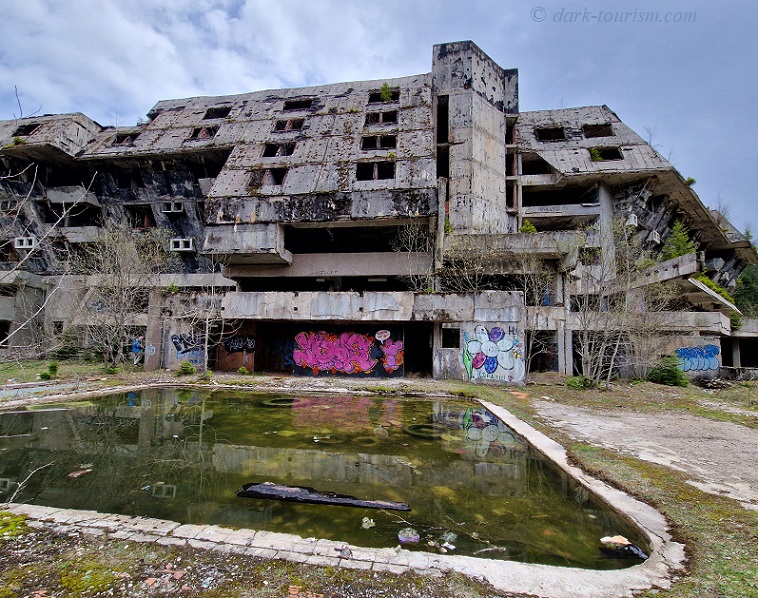
Also in Sarajevo I opted for a “Jewish Sarajevo Tour” (the city was once known as the “Jerusalem of the Balkans”), and that included a visit to the Vraca memorial complex, which on the one hand commemorates the Holocaust, which almost destroyed the Jewish community of Sarajevo, and on the other hand, yet again, celebrates Tito and his partisans. Here’s a photo of a partly damaged statue of a female partisan, with one arm missing but the other still defiantly raised with the typical communist fist:
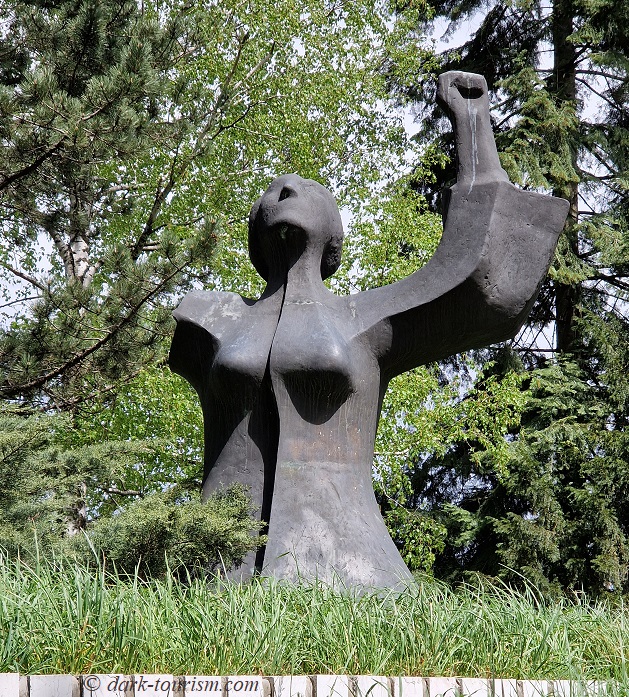
The final tour that I took part in was an all-day affair and was with a group (eight of us, a mix of five nationalities). This evidently popular tour took us to Srebrenica, in particular to the memorial complex and cemetery at Potočari:

The sea of white Muslim tombstones has grown considerably since I first saw it back in 2009, as meanwhile more and more bodies of those massacred in the Srebrenica genocide have been identified through DNA analysis and subsequently buried here. The commemorative wall in the foreground lists the names of all the over 8000 victims.
At the site of what was then a Dutch UN peacekeepers’ base, a former car battery factory, there is now a comprehensive memorial complex with an in-depth exhibition that didn’t yet exist when I was there in 2009. Here’s a photo of one hall of the former factory site:

Taken together this Srebrenica commodification can be considered Bosnia’s most significant DT site of them all. And it’s clearly popular. There were several coaches with large groups at the site when we were there so that a degree of crowd management was necessary. This underscores my impression that in Bosnia, DT actually forms a firmly established part of mainstream tourism. Also, the other participants I spoke to about what I do (and handed business cards to) did not bat an eyelid over encountering the concept of dark tourism. On the contrary, I may have recruited additional readers for my website (and possibly even my book) …
On my last day in Sarajevo the weather finally picked up a bit after several days of low clouds and rain (including even thunderstorms), and so I finally had the chance to do one activity that I hadn’t been able to do before – namely: walk the full length of the abandoned former bobsleigh run from the 1984 Winter Olympics. Damaged in the 1990s war, the structure has been derelict ever since and these days attracts hikers, urbexers and graffiti sprayers. The graffiti sprayers have left works of various artistic merit, some just the boring old “tags”, others are visually quite stunning. This post’s final photo shows a part of this:

But with this I shall bring this Blog Post to a close. The places represented in it will eventually be given proper chapters on my main website, where you will then be able to read more about them. This post is just a taster of more to come, possibly also on this Blog.

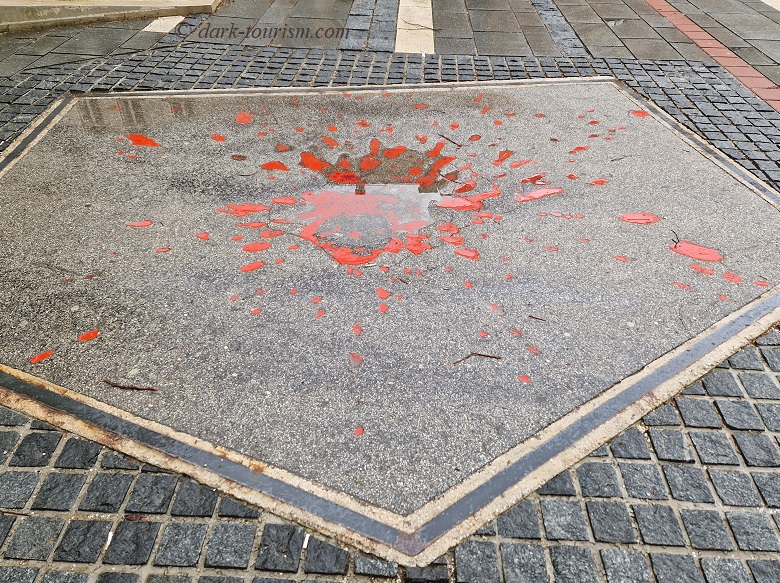
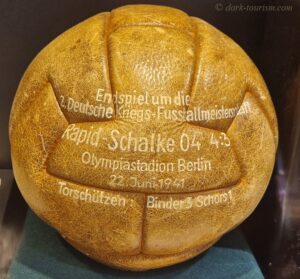
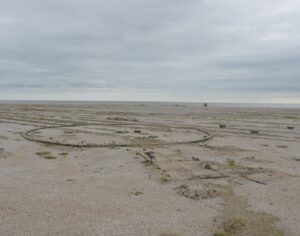
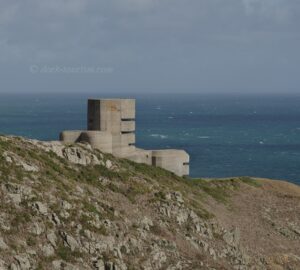
2 responses
Great read! I wish I had read this before I went to Bosnia last weekend – would have loved to have done the Brutalism Tour, and a couple of other things you mention.
I did go on a War Scars tour of Sarajevo, which I found on a Free Tours website – that was well worth doing. The tour guide mentioned that the Sarajevo Roses (as per your introductory image) were for locations were 3 people were killed in an incident such as a shelling.
Thanks! … on our Brutalism tour we also crossed a pedestrian bridge which had such a shelling scar, but without any red resin, and our guide explained that this meant that nobody got killed there. I’m not sure there really is such a strict correlation, though, as there are still so many war scars all over the place …